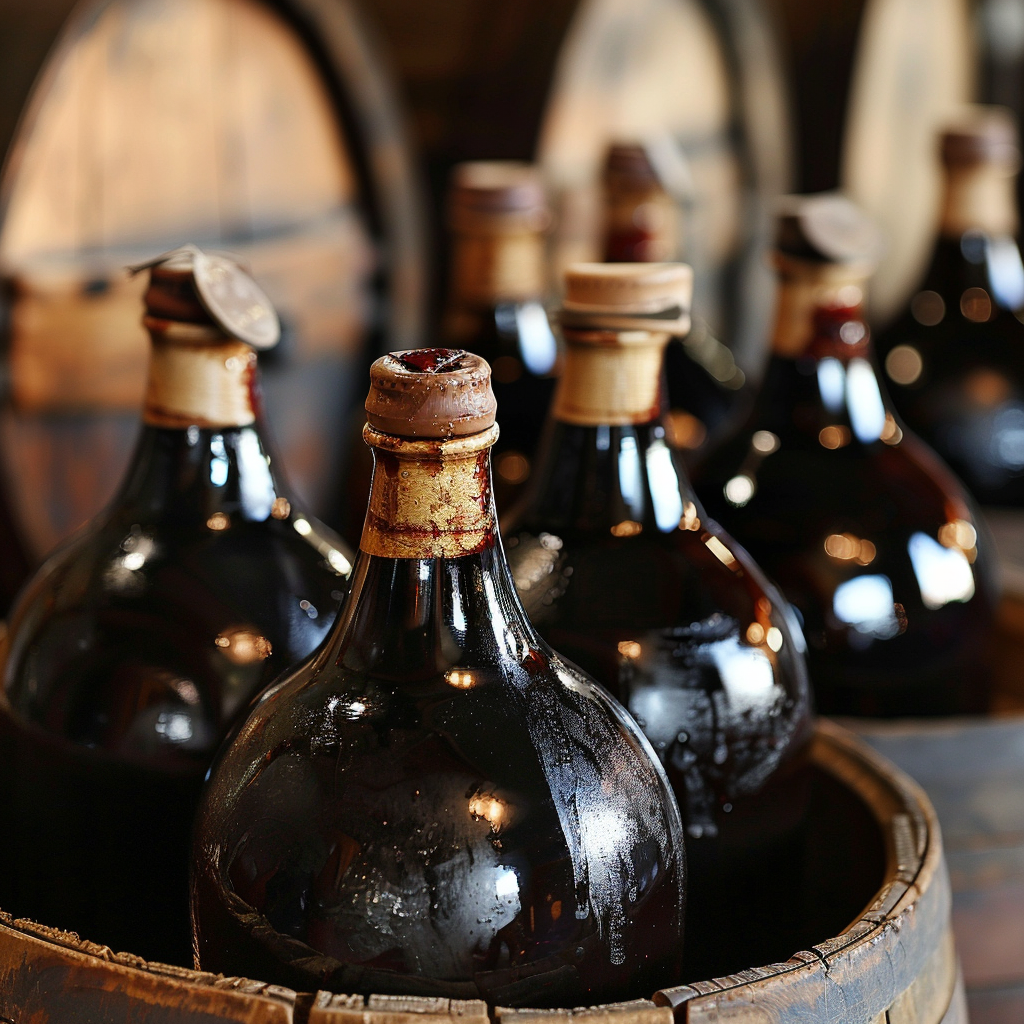Balsamic vinegar is not only a simple addition to dishes, but also a real aromatic masterpiece that gives dishes an exquisite taste and unique aroma. Its history is rich in traditions and production secrets that turn ordinary vinegar into a precious product.
Production of balsamic vinegar
The process of making balsamic vinegar is a complex art that is passed down from generation to generation. Here are the main stages of its creation:
a) Selection of raw materials:
- The balsamic vinegar production process begins with the selection of high-quality grapes. Typically, grape varieties such as Lambrusco or Treviano are used from the Emilia-Romagna region of Italy.
- The raw materials must be fully ripe to ensure the high levels of sugars and acids necessary for fermentation and aging.
b) Fermentation:
- After the grapes are harvested, they are pressed to extract the juice, which then undergoes natural fermentation. During this process, the sugars in the juice are converted into alcohol.
- Fermentation can last from several weeks to several months, depending on the desired flavor profile and aroma of the vinegar.
c) Aging in barrels:
- Once fermentation is complete, the vinegar is transferred to wooden barrels, usually oak or chestnut. These barrels play a crucial role in the aging and final development of the vinegar’s flavor and aroma.
- Aging continues for at least several years, during which the vinegar undergoes oxidation and concentration processes.
d) Mixing and dilution:
- Once aging is complete, the vinegar is diluted and mixed with other wine vinegars or wine to achieve the desired balance of acidity and flavor.
- Some manufacturers also add concentrated grape juices to give the vinegar a richer flavor and aroma.
The process of making balsamic vinegar requires patience, skill and the ability to pass on tradition from generation to generation to create a product of the highest quality that is prized by chefs and gourmets around the world.
Raw materials and ingredients
Raw materials for the production of balsamic vinegar withgrapes are tinned, and for this they use special grape varieties that have the necessary characteristics to obtain high-quality vinegar. The main grape varieties used in production are Lambrusco and Treviano. These varieties are typically native to the Emilia-Romagna region of Italy, where many balsamic vinegar factories are located.
The choice of grape variety and its quality play a decisive role in shaping the taste, aroma and color of balsamic vinegar. The grapes must be fully ripe and high in sugars to provide the necessary basis for fermentation and subsequent aging of the vinegar. The grapes used must also have certain acidic characteristics in order to achieve the desired balance of acidity in the final product.
In addition to grapes, various additives and spices can be used to give balsamic vinegar a unique taste and aroma. This could include, for example, oak or chestnut chips, which are added during the barrel aging process, as well as various types of wine vinegars, which can be used to blend and achieve the desired flavor profile.
Aging and fermentation process
The aging and fermentation process plays a crucial role in shaping the characteristics of balsamic vinegar. Here are the key steps in this process:
Fermentation: After the grapes are harvested and the juice is extracted, the fermentation process begins. In this process, natural yeasts found in grape juice convert sugars into alcohol. This stage usually lasts from several weeks to several months, depending on the desired flavor profile and aroma of the vinegar.
Aging in barrels: Once fermentation is complete, the vinegar is transferred to wooden barrels where it undergoes an aging process. These barrels, usually oak or chestnut, play an important role in shaping the character and aroma of the vinegar. As the vinegar ages, it oxidizes and concentrates, giving it a rich, complex flavor.
The aging process can continue for several years, with the vinegar periodically transferred from one barrel to another to ensure even mixing and achievement of the desired characteristics.
Quality and standards
The quality of balsamic vinegar is determined not only by its taste characteristics, but also by its compliance with certain standards and requirements.There are various organizations and associations that develop standards for the production of balsamic vinegar and issue corresponding quality certificates. For example, in Italy such standards are developed by the association “Consortium of Balsamic Vinegar of Modena” (Consorzio Aceto Balsamico di Modena), which gives the product DOP (Denominazione di Origine Protetta) or IGP (Indicazione Geografica Protetta) status depending on where the vinegar is produced .
The main quality criteria that people pay attention to when evaluating balsamic vinegar include its taste characteristics, aroma, color, consistency and duration of aging.Factors such as the origin of the raw materials, the conditions under which they are produced and adherence to traditional methods are also assessed.
Popular dishes using balsamic vinegar
Balsamic vinegar is widely used in cooking and is a key ingredient in many dishes, both in Italian and international cuisine. Its rich taste and aroma make it an indispensable component for many dishes. Some of the most popular dishes that use balsamic vinegar include:
- Caprese: fresh tomatoes, mozzarella and basil, dressed with balsamic vinegar and olive oil.
- Salads: Balsamic vinegar is often used in salad dressings, adding a distinct flavor and aroma.
- Marinades and sauces: Balsamic vinegar is often added to marinades for meat and fish, and is also used to prepare various sauces and glazes.
- Pasta and risotto: Balsamic vinegar can be added to pasta or risotto sauces to enhance flavor and aroma.
- Desserts: It is also used in the preparation of various desserts such as fruit salads, panna cotta or ice cream, adding a unique taste and aroma to them.
Balsamic vinegar opens up countless possibilities for culinary experimentation and adds a unique flavor to many dishes, making them more interesting and tasty.
Balsamic vinegar is an integral part of many culinary recipes and gives dishes a unique taste and aroma. In this article, we looked at the process of producing balsamic vinegar, from the selection of raw materials to the aging and fermentation process. We also looked at the importance of quality and standards when making balsamic vinegar, and looked at popular dishes in which it is used. With its unique characteristics and varied uses, balsamic vinegar continues to be an integral part of the culinary world, inspiring chefs and foodies around the world.
The grape varieties most commonly used in the production of balsamic vinegar are Lambrusco and Treviano, which are native to the Emilia-Romagna region of Italy.
When determining the quality of balsamic vinegar, its taste characteristics, aroma, color, consistency, origin of raw materials and compliance with traditional production methods are assessed.

